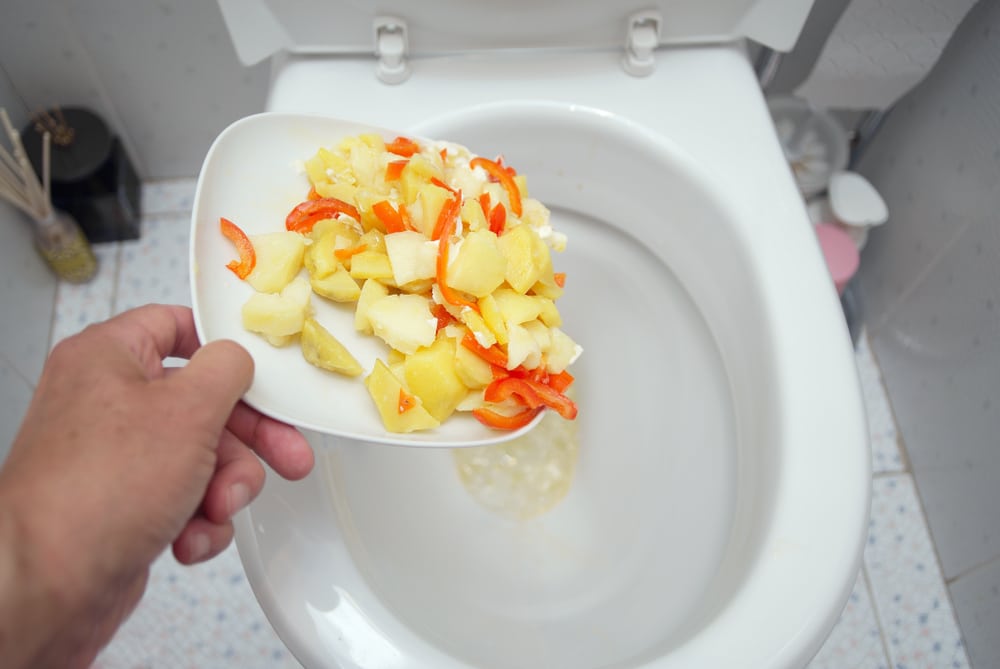Are You Permitted to Flush Food Down the Toilet?
Are You Permitted to Flush Food Down the Toilet?
Blog Article
How do you really feel about Flushing Food Down the Toilet??

Introduction
Many individuals are usually confronted with the issue of what to do with food waste, especially when it involves leftovers or scraps. One typical concern that emerges is whether it's okay to purge food down the toilet. In this short article, we'll look into the reasons that people may take into consideration flushing food, the consequences of doing so, and different approaches for proper disposal.
Reasons why individuals might consider purging food
Lack of understanding
Some people may not understand the possible injury triggered by flushing food down the commode. They may erroneously think that it's a safe method.
Ease
Flushing food down the toilet may seem like a quick and easy option to throwing away unwanted scraps, specifically when there's no nearby trash bin readily available.
Idleness
In many cases, people may simply pick to flush food out of sheer idleness, without considering the repercussions of their actions.
Repercussions of flushing food down the toilet
Environmental influence
Food waste that ends up in rivers can add to air pollution and damage marine environments. Additionally, the water made use of to purge food can stress water sources.
Plumbing concerns
Flushing food can lead to clogged pipelines and drains pipes, causing expensive pipes fixings and hassles.
Types of food that should not be flushed
Fibrous foods
Foods with fibrous structures such as celery or corn husks can get entangled in pipes and cause obstructions.
Starchy foods
Starchy foods like pasta and rice can take in water and swell, causing obstructions in pipelines.
Oils and fats
Greasy foods like bacon or food preparation oils need to never be flushed down the commode as they can solidify and create obstructions.
Proper disposal techniques for food waste
Utilizing a waste disposal unit
For homes equipped with waste disposal unit, food scraps can be ground up and purged with the plumbing system. Nonetheless, not all foods are suitable for disposal in this way.
Recycling
Particular food packaging materials can be reused, lowering waste and reducing ecological effect.
Composting
Composting is an eco-friendly way to deal with food waste. Organic materials can be composted and used to enrich soil for gardening.
The importance of appropriate waste administration
Reducing ecological damage
Proper waste monitoring methods, such as composting and recycling, assistance lessen pollution and maintain natural deposits for future generations.
Shielding plumbing systems
By preventing the practice of flushing food down the commode, house owners can protect against pricey pipes repair services and maintain the integrity of their pipes systems.
Final thought
Finally, while it might be tempting to purge food down the toilet for ease, it is essential to comprehend the potential effects of this activity. By adopting appropriate waste administration techniques and getting rid of food waste sensibly, people can add to healthier plumbing systems and a cleaner setting for all.
FLUSH FOOD DOWN THE TOILET?
FLUSHING FOOD CAN CAUSE BLOCKED DRAINS IN YOUR HOME
All of the plumbing fixtures in your home are connected to the same sewer pipe outside of your home. This outdoor sewer pipe is responsible for transporting all the wastewater from your home to the Council sewer mains. Even small pieces of food that go down the kitchen sink can cause problems for your sewer. It should therefore be obvious that flushing larger bits of food, such as meat, risks a clog in either the toilet itself or the sewer pipes. Flushing greasy food is even more problematic because oil coagulates when it cools, coating the interior lining of your pipes.
THE TOILET IS NOT A BIN
Food isn’t the only thing that people shouldn’t be flushing down the toilet. People use the toilet to dispose of all kinds of things such as tampons, makeup wipes, dental floss, kitty litter and even underwear. Water goes to great lengths to educate residents about the high costs and stress placed on wastewater treatment systems simply from people flushing the wrong stuff down the toilet. It costs taxpayers millions of dollars each year, and homeowners thousands in blocked drain repairs.
FLUSHING FOOD IS A WASTE OF WATER
Flushing food is a waste of our most precious resource - water. In June this year Level 1 water restrictions were introduced to protect water supply from drought conditions. Much of New South Wales continues to be affected by prolonged drought with recent figures revealing up to 97 per cent of the state remains in drought. Depending on whether you have a single or dual flush toilet, every single flush uses between five and 11 litres of water. In the current climate this is a huge amount of water to be wasting on flushing food that should be placed in the bin (or better yet, the compost).
https://www.jabplumbingsolutions.com.au/blog/can-you-flush-food-down-the-toilet

Do you appreciate reading about ? Try leaving feedback down below. We will be happy to see your feelings about this write-up. We hope to see you back again in the near future. Loved our posting? Please quickly share it. Help somebody else find it. Thanks for your time. Don't hesitate to stop by our blog back soon.
Call Today Report this page